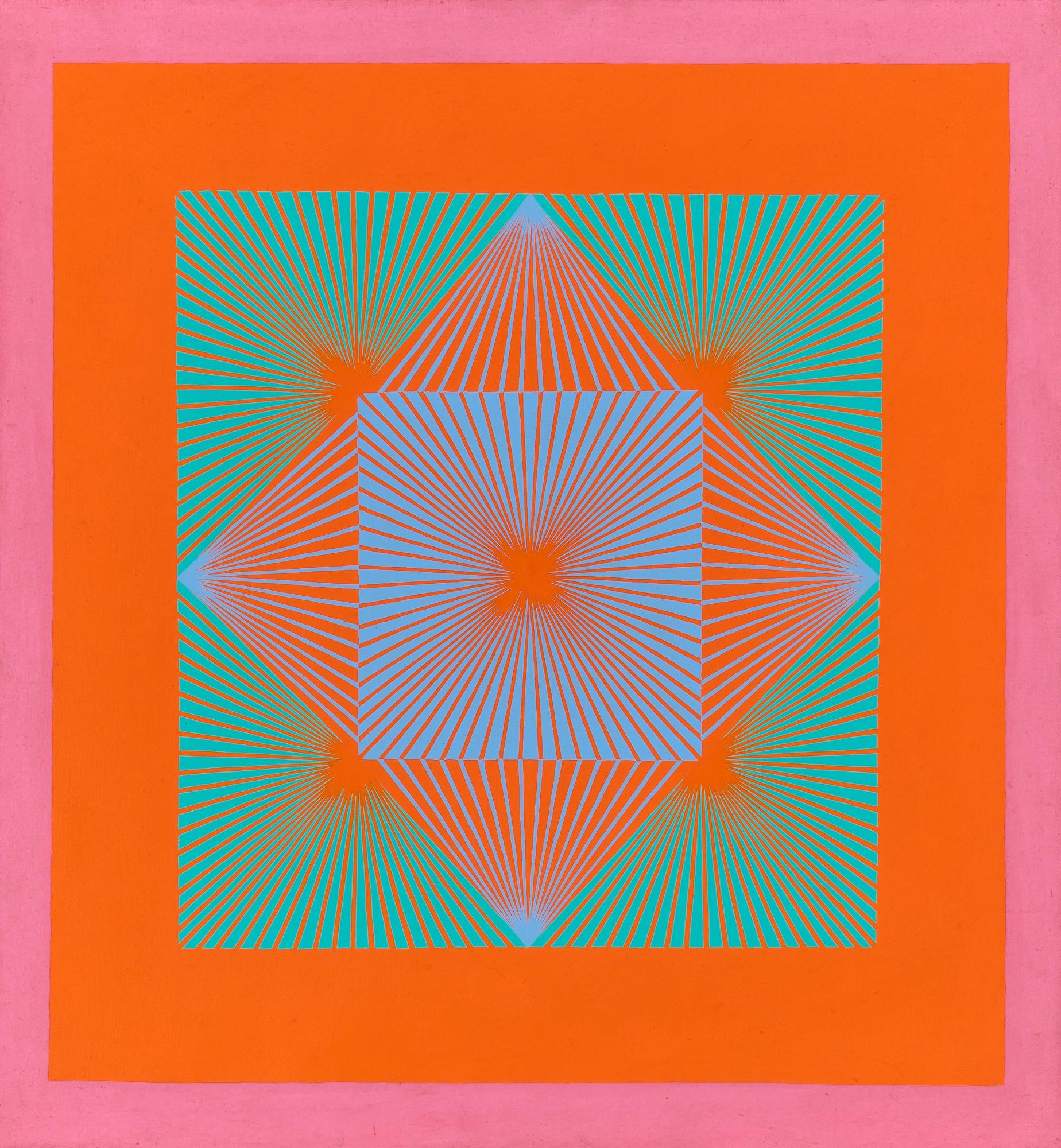
Richard Anuszkiewicz
American, 1930-2020
Richard Anuszkiewicz was a leading figure in American postwar abstraction and a foundational voice in the Op Art movement. Born in Erie, Pennsylvania, to Polish immigrant parents, Anuszkiewicz developed an early interest in visual structure and chromatic complexity. He studied at the Cleveland Institute of Art before earning an MFA from Yale University, where he trained under Josef Albers. Though often associated with Op Art, Anuszkiewicz’s work stands apart for its painterly nuance and intellectual elements.
Throughout his career, Anuszkiewicz remained dedicated to exploring the optical effects of complementary colors and geometric form. His canvases invite the viewer into a shifting dialogue of depth, rhythm, and patterns. By the 1960s, his work had garnered international attention, including participation in MoMA’s seminal exhibition The Responsive Eye and representation at documenta IV and the Venice Biennale. Over the course of his life, he held more than 100 solo exhibitions and appeared in nearly 300 group shows worldwide.
Anuszkiewicz’s paintings are held in the collections of the Museum of Modern Art, the Metropolitan Museum of Art, the Whitney Museum of American Art, the Art Institute of Chicago, and numerous others. His many honors include the Cleveland Arts Prize, the Lee Krasner Award, and a Lifetime Achievement Award from the Florence Biennale. Today, his work continues to appeal to collectors seeking clarity, balance, and a meditative relationship with color. He is remembered as a disciplined innovator whose restrained yet radiant practice redefined the language of abstraction.




